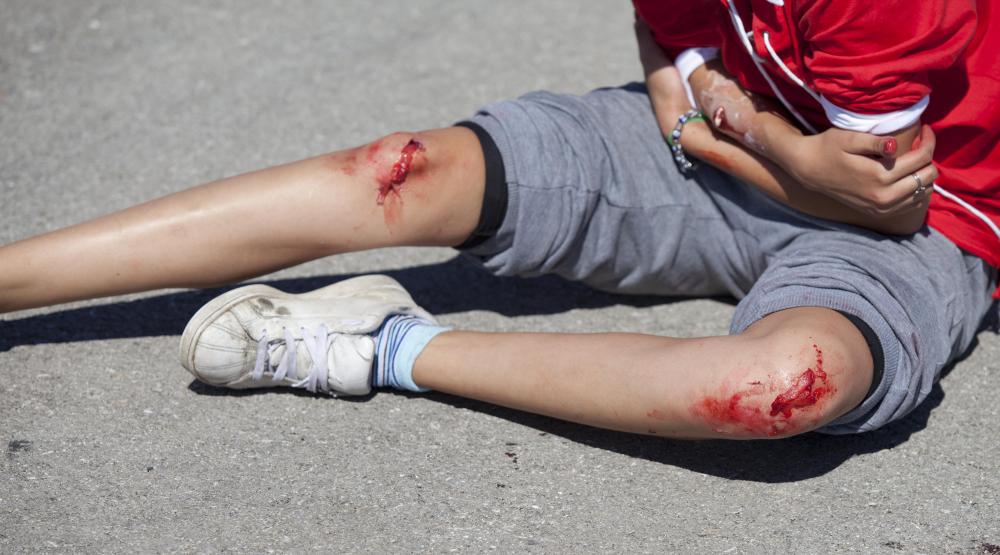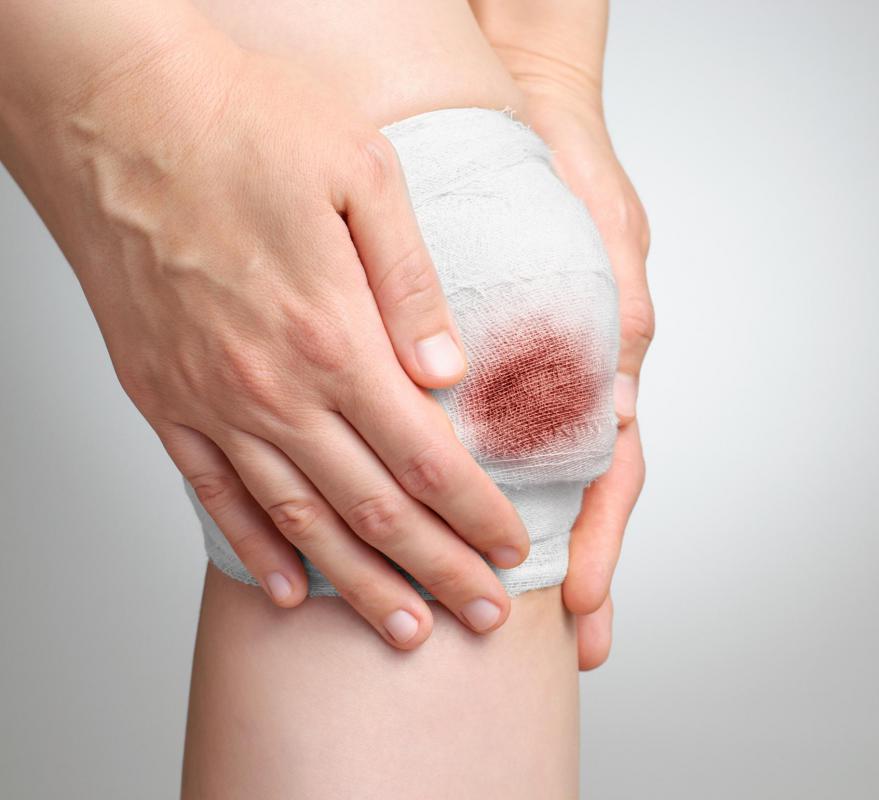At TheHealthBoard, we're committed to delivering accurate, trustworthy information. Our expert-authored content is rigorously fact-checked and sourced from credible authorities. Discover how we uphold the highest standards in providing you with reliable knowledge.
What is Moist Wound Healing?
Moist wound healing is an approach to wound care where people keep the wound moist to promote rapid healing with reduced scarring. This is not effective or appropriate for all wounds, but can be suitable for patients with issues like diabetic ulcers and burns. A wound care specialist can evaluate a patient to determine which option is best and provide specific advice on dressings and wound care procedures.
Traditionally, the approach to wound care was to keep the wound dry. This promoted the formation of a scab, allowing healing to take place below the surface. Doctors believed this limited odors, chances of infection, and other common wound care problems. In the 1960s, the approach to wound care began to shift, and some care providers started recommending moist wound healing for some situations.

In moist wound healing, the doctor starts by debriding the wound to remove any dead tissue, and cleaning it thoroughly. The cleaning should remove all foreign bodies and flush the surface of the wound to leave it as clean as possible. Then, the doctor can apply a moisture-retentive dressing like an algae dressing or a cling film. The dressing keeps moisture inside while still allowing the wound to breathe. Periodically, it is necessary to take off the dressing, clean and check the wound, and rebandage.

Studies on moist wound healing suggest that for some wounds, it can promote rapid healing. The wound may be less painful, and odor should be minimal as long as people care for the wound well. Moisture will encourage the epithelial cells in the top layer of the skin to grow, creating a layer of new skin across the surface of the wound to protect the inside of the body more quickly. This differs from promoting development of a scab to cover the wound while it heals, with new skin growing back last.

In a hospital setting, a nurse can regularly check the wound and adjust the treatment regimen as necessary. People caring for wounds at home need to be vigilant for signs of inflammation and infection. If people using moist wound healing start to notice issues like a strong smelling odor, changes in skin color, heat, or an unusual discharge at the wound site, they should contact a doctor to get advice and treatment recommendations. The doctor may propose changing tactics by using different dressings or switching to a dry technique if the moisture appears to be the root of the problem.
AS FEATURED ON:
AS FEATURED ON:
















Discussion Comments
@turkay1, @ddljohn-- Yes, it has been proven now that wounds heal much faster with moist wound healing. But the reason it's not appropriate for all wounds is because the moist environment actually promotes bacteria growth. This may not always be a bad thing because bacteria can also increase cell reproduction. However, it could also get out of hand and develop into an infection.
That's why, I think that moist wound healing should only be used under the care of a medical practitioner. We use it all the time at the hospital I work at, but we check the wounds daily to make sure there is no developing infections.
This is also the reason that moist dressings are added antibacterial medications, to keep away infections. So it's a good wound treatment, but it needs to be observed carefully.
Like the article said, moist wound healing isn't appropriate for all types of wounds. It really depends on the circumstances and how the wound is doing.
Wound closure can depend on how much damage there is and how your immunity is doing. I've had wounds that did not respond well to dry bandaging but healed up very quickly with moist bandaging. I've also had it where the moist bandaging didn't work but the dry did.
I'm not saying that you should randomly try both and see what happens. Usually doctors are good about what kind of wounds respond well to which type up bandaging. So it's best to listen to their suggestions. But if you can't see a doctor and your wound is not closing in a dry environment, it wouldn't hurt to try a moist bandage.
And a lot of the moist bandages have antibacterial medicines in them which prevent infections. So they have that one additional advantage that dry bandages don't.
I wish I had know about this method before. I have a huge burn scar on my arm from when I used to work at a restaurant. I burned my arm with frying oil and didn't even go to the hospital for treatment. I was really poor then and didn't have health insurance.
The nurse at my school cleaned it up for me and bandaged it over. I used to change the bandage every couple of days and it did scab over. But it hurt like crazy and literally took like a month to heal! And I am now forever left with a huge ugly scar there.
If I had known about moist wound healing then, maybe I could have prevented it from scarring. And the wound healing process probably wouldn't have taken so long either.
Post your comments